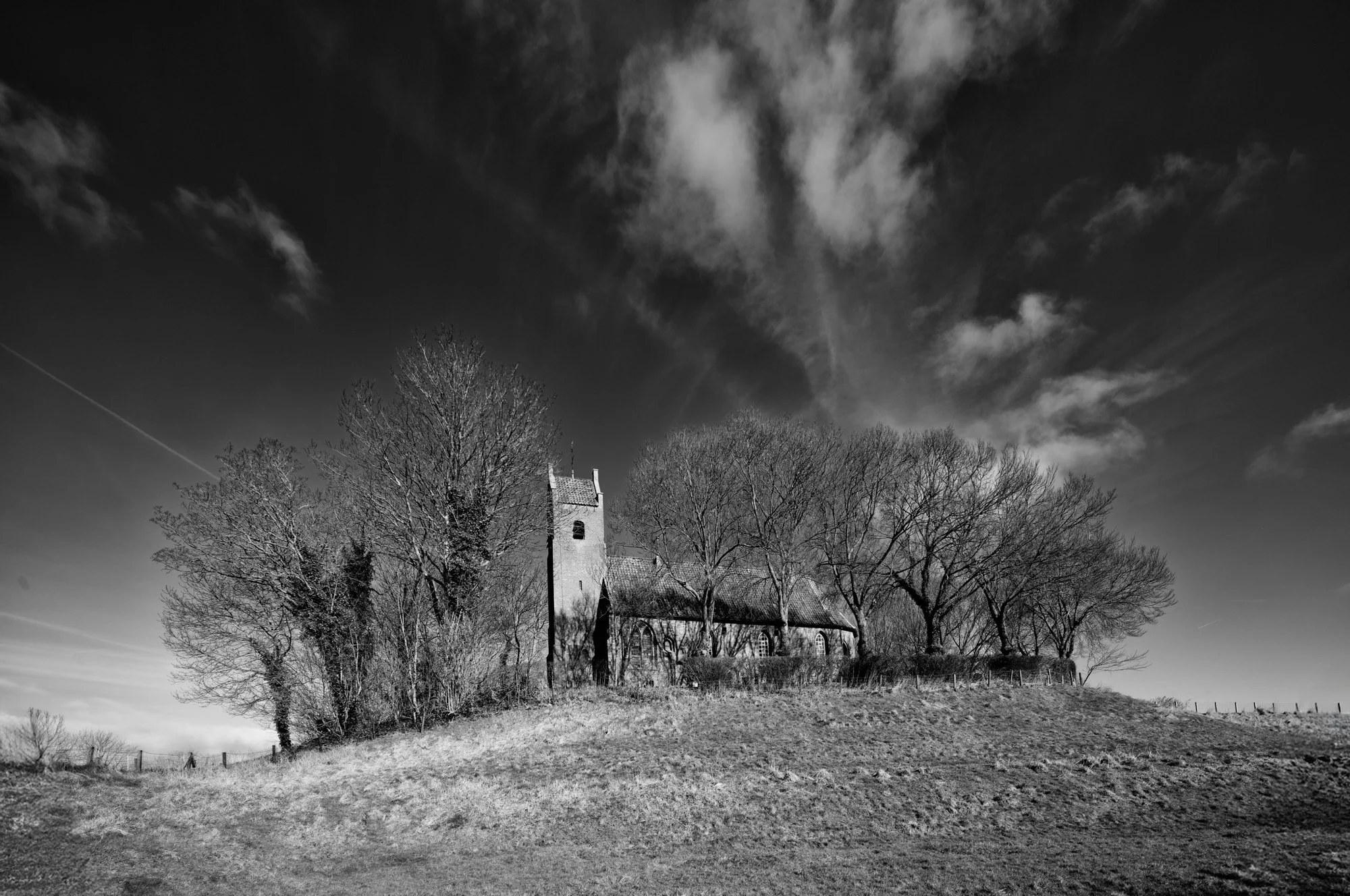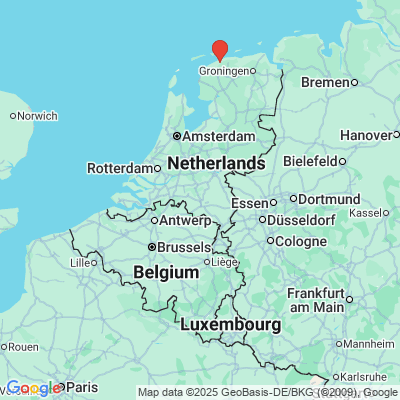The church at Hegebeintum (The Netherlands).
In the tiny Frisian village of Hegebeintum, the church seems to float above the surrounding fields. It stands atop the highest terp—an artificial dwelling mound—in the Netherlands, rising about eight and a half metres above sea level. Built in the 12th century, the Romanesque church of brick and tuffstone replaced an earlier wooden structure, serving both as a place of worship and as a refuge during floods.
Over the centuries, the church was altered in Gothic style and fortified with a stout tower. Inside, you can still see medieval fresco traces and a richly carved 17th-century pulpit. The terp itself has its own story: much of it was dug away in the late 19th century for fertile soil, leaving the church standing even more prominently against the horizon.
Today, the church and terp together form a striking landmark—a meeting point of human resilience, medieval faith, and the ever-changing Frisian landscape.
The interior of the church at Hegebeintum (The Netherlands).



